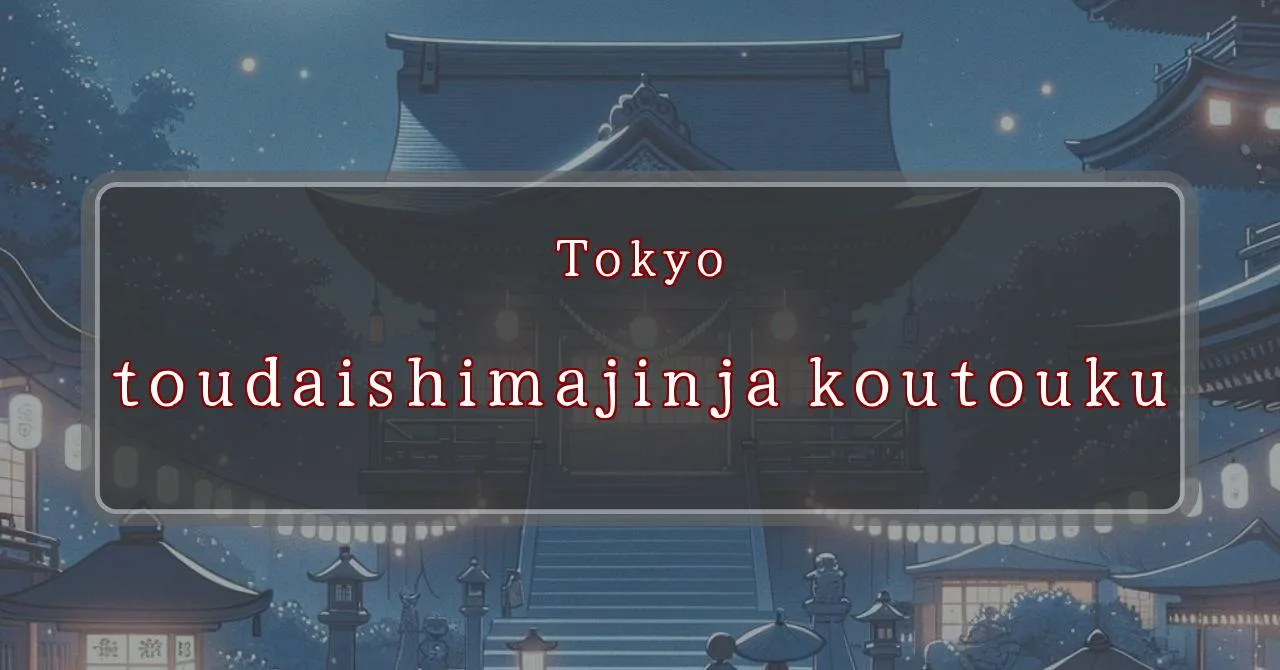Enchanting shrine festival in Tokyo with lion dance and lucky mallet
Basic Information
Here’s an overview of the festival.
- Address: 7-24-1 Oshima, Koto-ku, Tokyo 136-0072
- Phone Number: 03-3681-7058
- Access: 7-minute walk from Toei Shinjuku Line Higashi-Ojima Station
- Festival Days: First Friday, Saturday, and Sunday in August
Main Events and Attractions of the Festival
Here are the main events and attractions of the festival.
Lion Dance Dedication
On January 2nd and 3rd, there will be a lion dance. Have your head bitten by the lion to ward off evil spirits and pray for good health throughout the year.
- Time: 10:00 AM and noon
- Location: In front of the shrine’s honden
- Anyone can participate
New Year’s Prayer and Purification
The New Year’s Prayer and Purification is a chance to pray for good luck and purification in the new year. It is open from 10:00 AM to 3:30 PM.
- 厄年厄祓い・家内安全・心身健康 (厄祓い, family safety, health of body and mind)
- 分散してのお参りをお願いします (Please visit the shrine at different times to avoid congestion)
- 1月中の土曜日と日曜日は予約不要ですが、1月4日以降の平日は準備の都合上必ずご予約をお願いいたします (No reservations are needed on Saturdays and Sundays in January, but reservations are required on weekdays from January 4th onward due to preparation)
- 2月3日と4日の大祓いは豆まきのためお休みです (The Grand Purification on February 3rd and 4th will be canceled due to the bean-scattering ceremony)
Fuk授け小槌 at Daikoku Shrine
Receive the benefits of the two adorable Daikoku statues with the Fuk授け小槌 (Lucky Mallet). The Fuk授け小槌 is available from 9:00 AM to 5:00 PM. Feel free to swing the mallet to receive its benefits.
- Benefits of Daikoku
- Prosperity in business
- Family fortune
- Wealth and prosperity
- Success and good luck
- Good relationships
Blessings and Deities
Here are the blessings and deities of the festival.
- Blessings:
- Family safety
- Prosperity in business
- 厄除け (厄祓い, warding off evil spirits)
- 開運招福 (good luck and fortune)
- 合格祈願 (praying for success in exams)
- 学業成就 (academic achievement)
- 病気平癒 (recovery from illness)
- 社運隆昌 (prosperity of the company)
- Deities:
- Amaterasu Omikami (sun goddess)
- Ushijima Daimyojin (deity of the Ushijima clan)
- Inari Daimyojin (deity of rice and fertility)
Origin and History
Here is the origin and history of the festival.
- The festival originated in 1949, when five shrines that had been destroyed in the Tokyo air raids of World War II were merged to form the current Higashi Ojima Shrine.
- The first festival was held in 1953, and it has been held annually ever since.
- The festival is held to pray for the peace and prosperity of the local community.
Tips and Notes for Visitors
Here are some tips and notes for visitors to the festival.
- The festival is held on the first Friday, Saturday, and Sunday of August each year.
- The shrine is located a 7-minute walk from Toei Shinjuku Line Higashi-Ojima Station.
- There are many food stalls and games at the festival.
- The festival is very popular, so it is recommended to arrive early to avoid crowds.
Parking Information
Here is some parking information for visitors to the festival.
- There is no dedicated parking lot for the festival.
- Visitors are advised to use public transportation or park in nearby coin-operated parking lots.
Popular Stalls and Food Carts in Recent Years
| Type of Stall | Description |
|---|---|
| Takoyaki | A staple at Japanese festivals. Characterized by a crispy outside and a creamy inside. |
| Jaga Butter | A simple yet popular snack of hot potatoes lavishly topped with melted butter. |
| Baby Castella | Small castella cakes, sweet and fluffy treats enjoyed by children and adults alike. |
| Grilled Ayu with Salt | Fresh ayu fish grilled whole with salt, a savory taste of Japanese summer. |
| Shaapin | A unique gourmet item influenced by foreign cuisine, with a chewy skin wrapping the filling. |
| Okonomiyaki | A Japanese grilled dish where you often choose your own ingredients for a personalized flavor. |
| Cotton Candy | A fluffy, sweet snack that’s extremely popular with children. |
| Chocolate Banana | A banana coated in chocolate, a fun and visually appealing dessert. |
| Kushiyaki | Various types of ingredients skewered and grilled, an easy-to-enjoy snack. |
| Yakisoba | Fried noodles mixed with a special sauce, a fast food favorite in Japan. |



